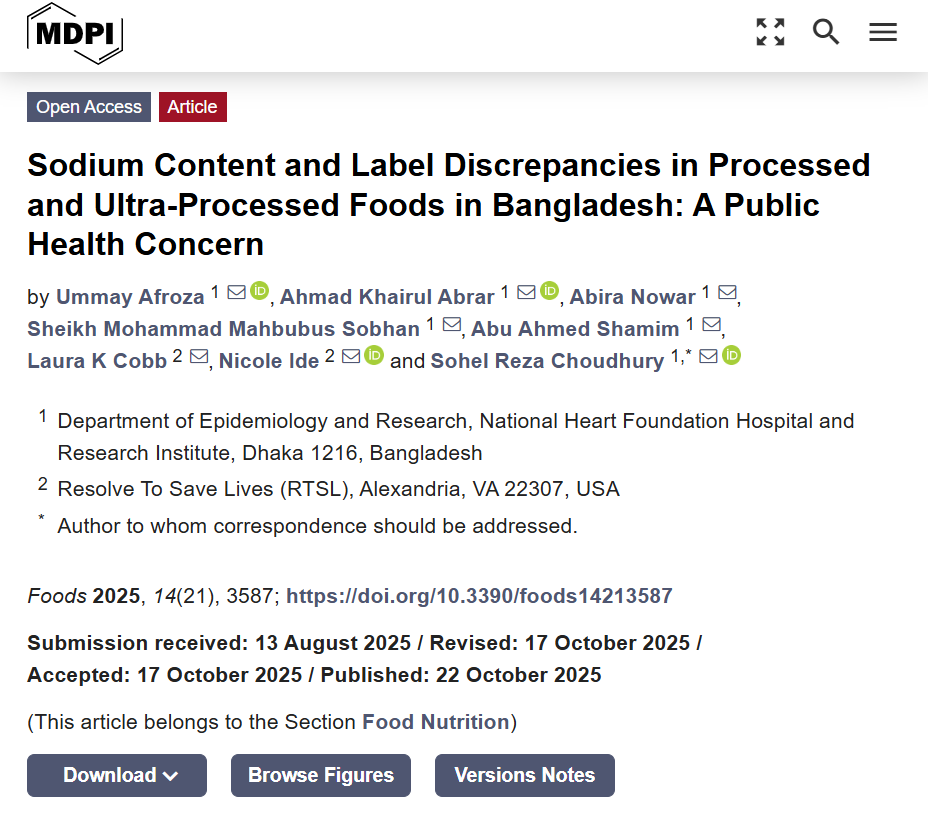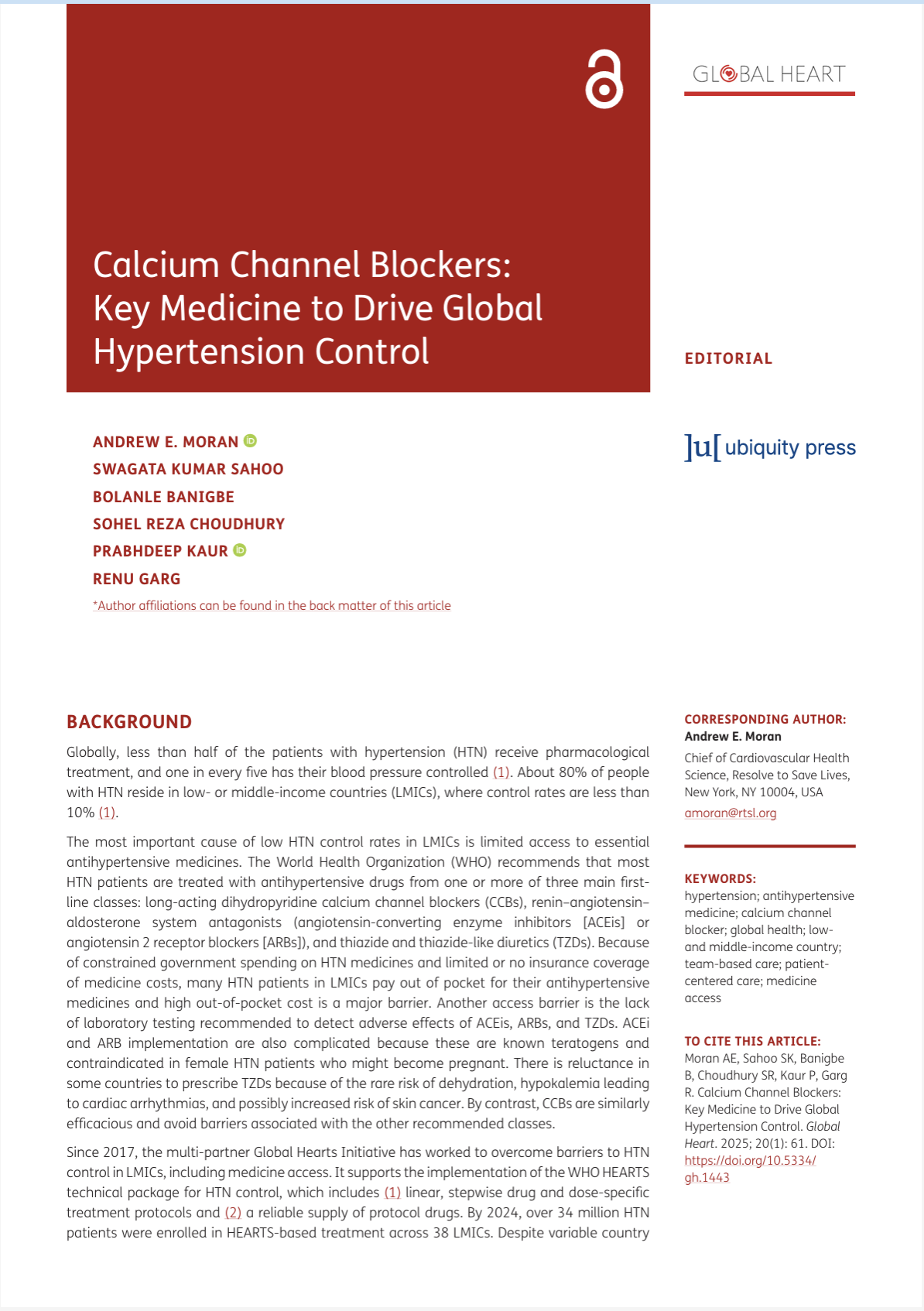Resource Library
Journal articles
7-1-7 Alliance
7-1-7 Alliance
7-1-7 Alliance
7-1-7 Alliance
Lancet Regional Health – The Americas
HEARTS in the Americas scaled to 10,000+ primary care facilities across 33 countries covering 6.3 million patients—and 60% now have their blood pressure controlled. Here’s how they did it.
Journal of the American College of Cardiology
Journal of American College of Cardiology
Ummay Afroza, et al.
A new study shows 97% of people in Bangladesh consumed ultra-processed foods weekly, with 63% of products exceeding WHO sodium limits.
BMC Primary Care
The Healthy Hearts Programme Philippines found that centralized drug procurement could reduce costs and improve hypertension care nationwide, supporting stronger and more equitable primary health care
BMJ Global Health
New IHR amendments strengthen global health emergency preparedness but will require strong political support and guidance.
The Lancet Public Health
A Lancet Public Health study shows a 20% tax on unhealthy foods in the Philippines could save thousands of lives and reduce healthcare costs.
Lancet Global Health
New data shows that potassium-enriched, lower-sodium salts don’t pose as much risk to those with chronic kidney disease as once thought. A co-written
Calcium channel blockers are safe, affordable, and effective—making them the ideal first-line hypertension treatment to drive global control efforts in low-resource settings.
Nearly one in four people living with HIV also have hypertension, underscoring the importance of integrating hypertension care into routine HIV services to support better long-term health outcomes.
Patient retention rose from 52% to 76% and blood pressure control increased to 57%.
BMC – part of Springer Nature
Understanding the cost of scaling up hypertension services to help prevent and control high blood pressure in Nigeria.
Frieden et al
Measuring blood pressure in patients attending primary care facilities is more efficient and effective than mass screenings.
Interventions identified by India Hypertension Control Initiative’s quality improvement program successfully increased monthly follow-up visits and decreased missed health visits.
Resolve to Save Lives
New study on the impacts of providing free blood pressure medications .
Andrew E. Moran, et.al
Study shows that simple hypertension treatment protocols significantly improve high blood pressure control in primary health care settings.
Less than ten percent of patients in LMICs get the cholesterol medications they need to prevent heart attack and stroke. Integrating statins into existing HEARTS protocols can address this disparity.
Our partners in Thailand advocate for engagement and coordination at all levels of care to control high blood pressure and reverse downward trend in Thailand.
Ummay Afroza, et al.
New study co-authored by RTSL and our partners in Bangladesh shows which warning labels on packages foods promotes healthy food choices.
Andrew E. Moran, et al.
Encouraging private sector providers in India to prioritize high blood pressure control with a focus on improving medication access could make a big difference in health for the country.
Faulty blood pressure readings can put lives at risk. This new trial highlights how to measure blood pressures correctly to improve quality of care.
BioMed Central Ltd





























